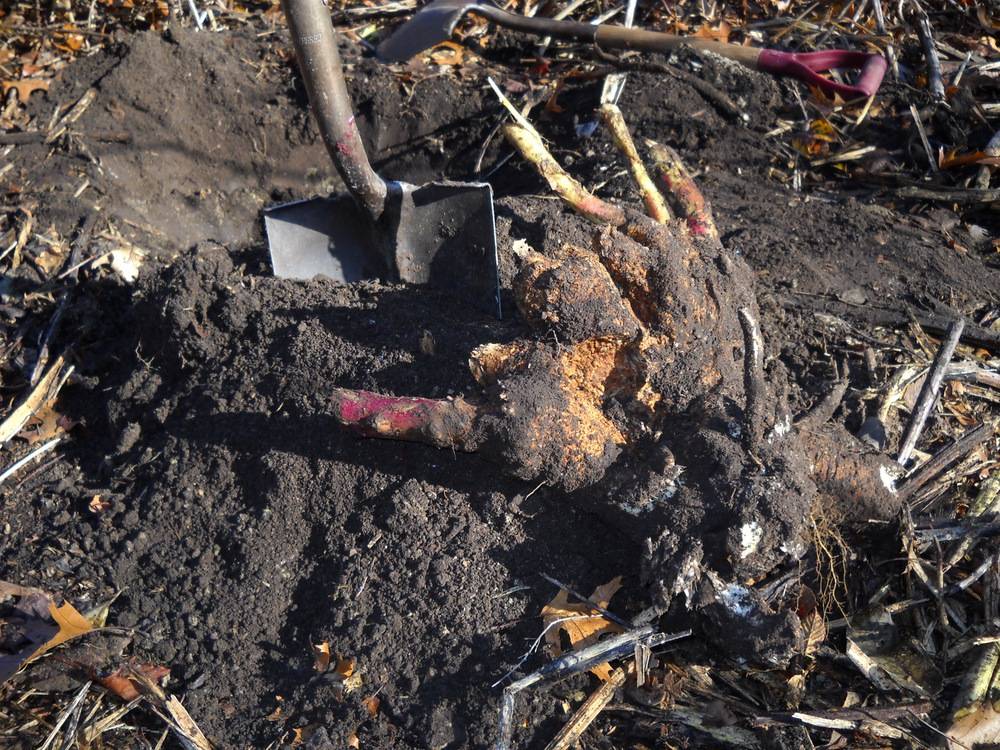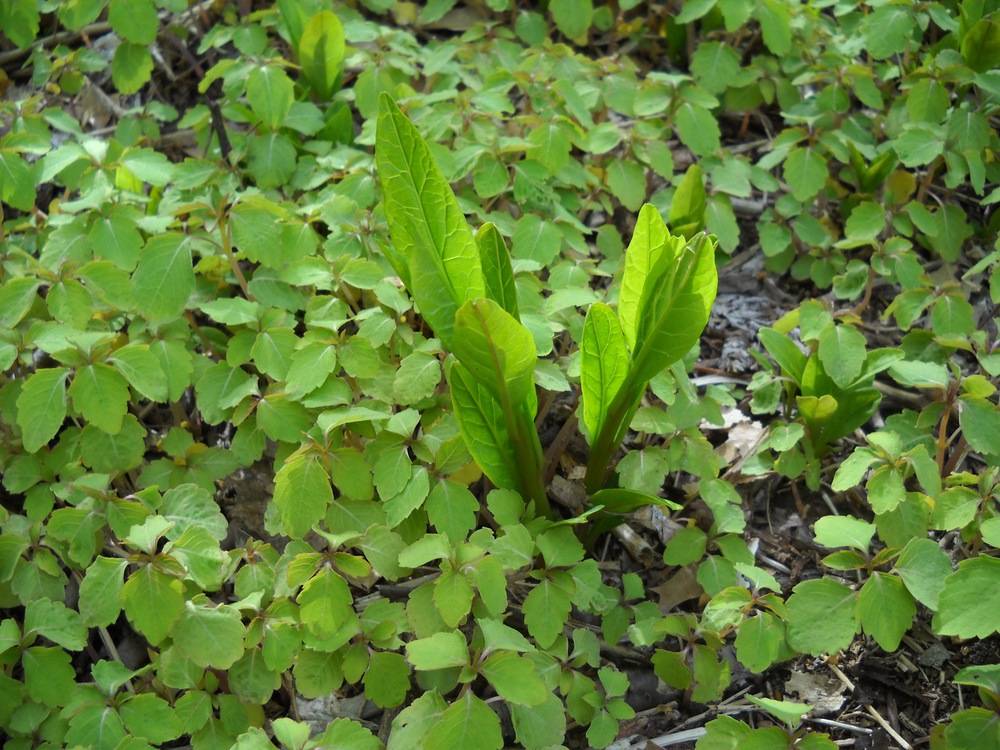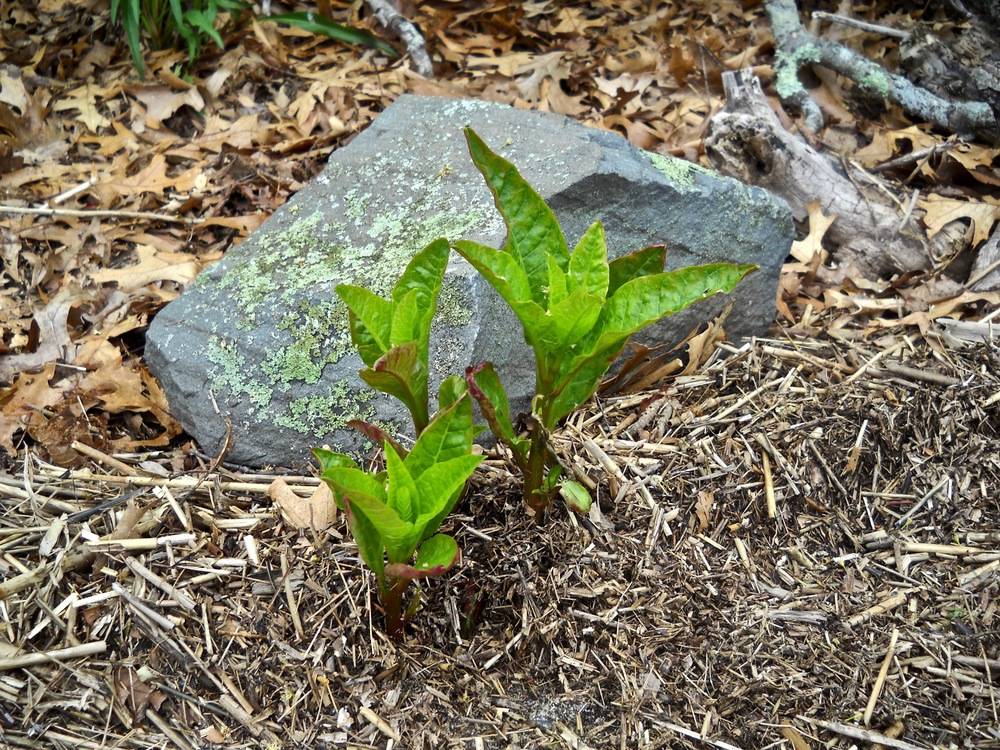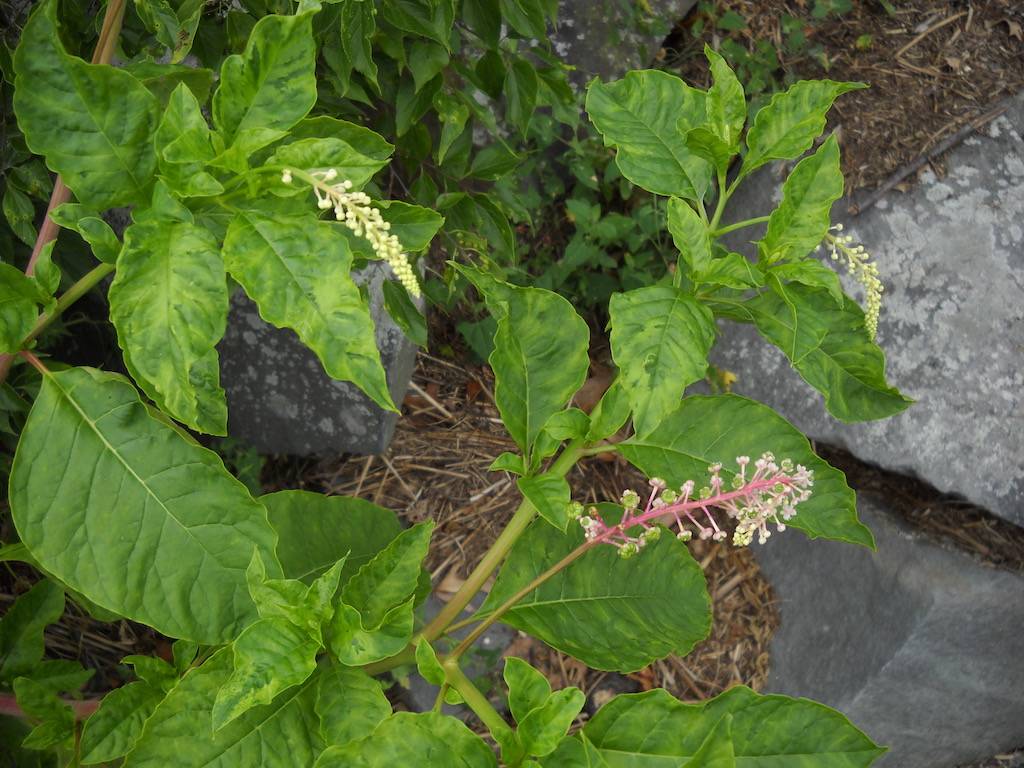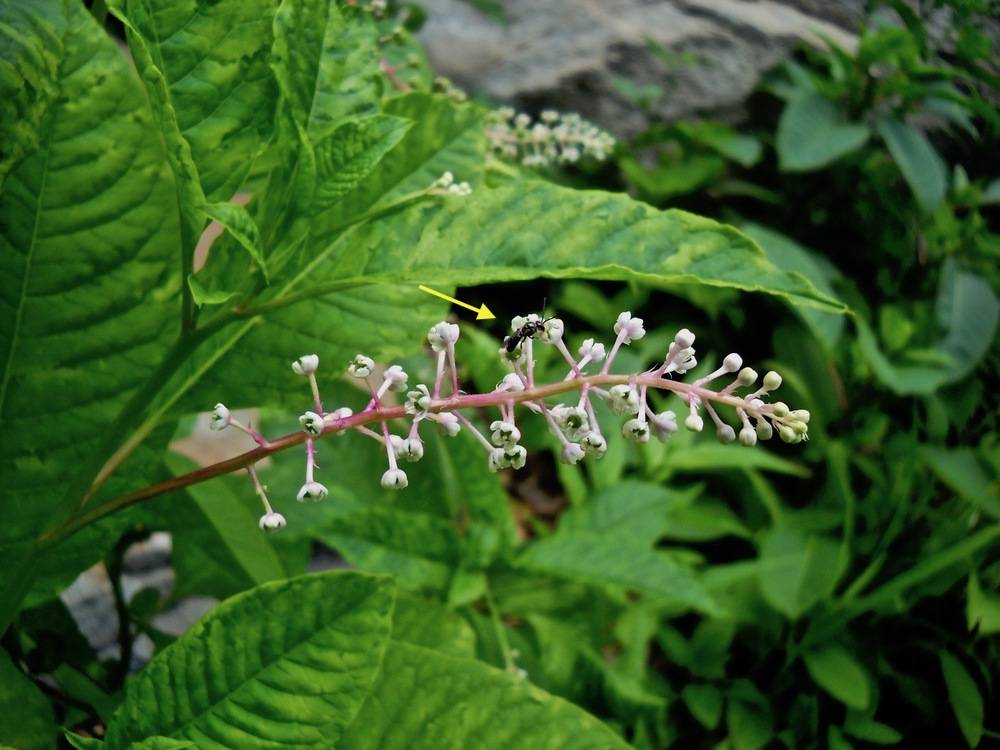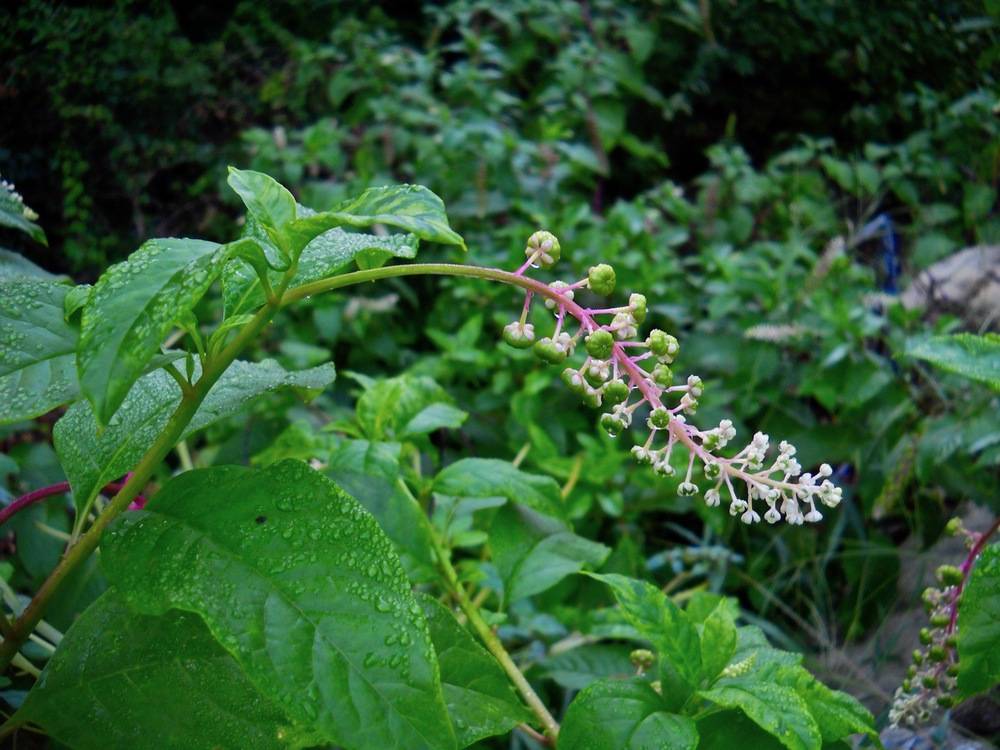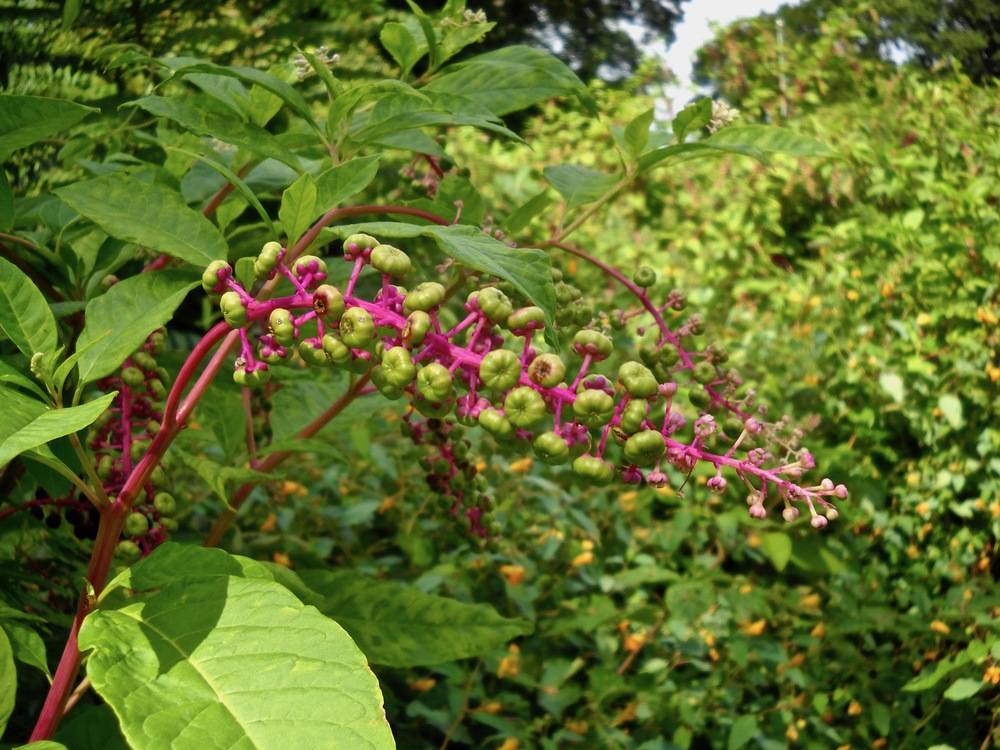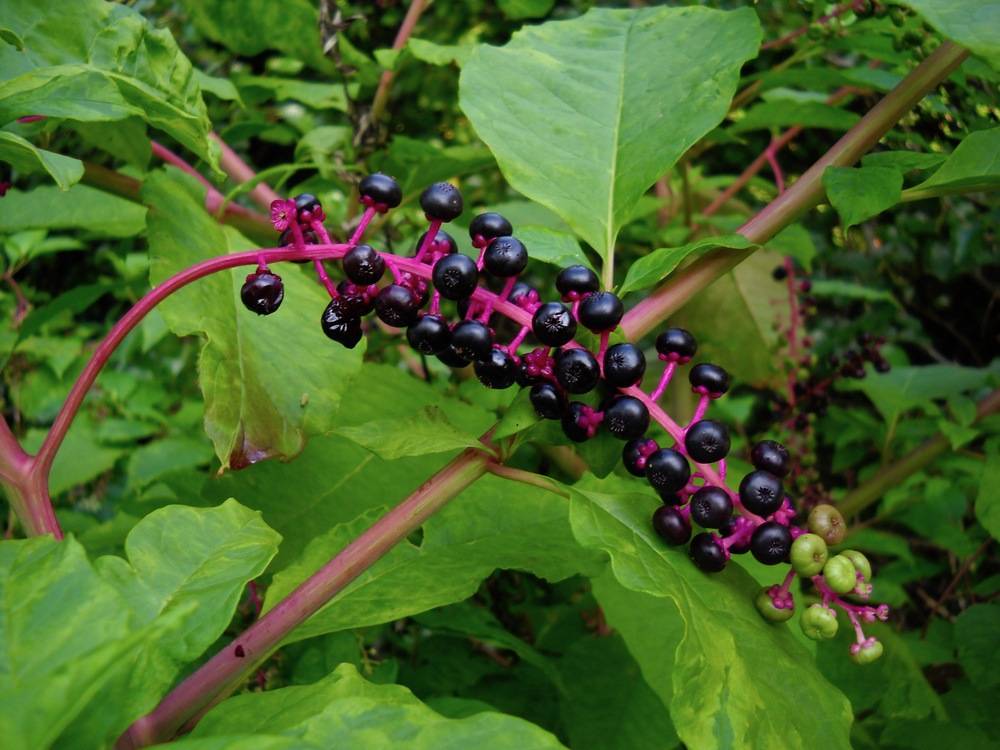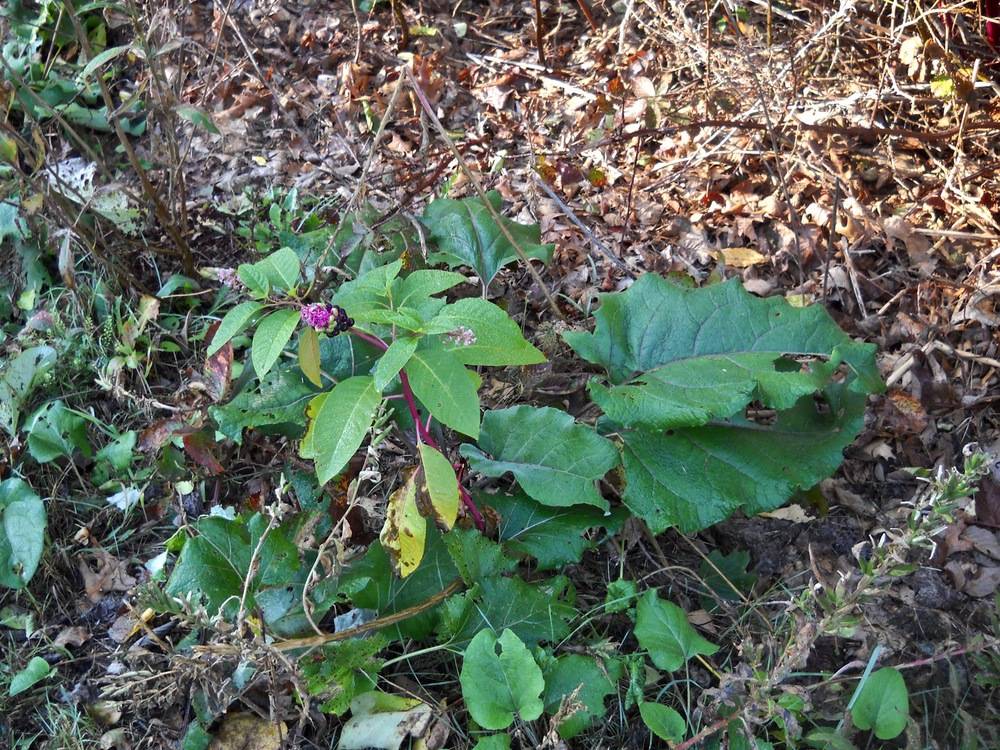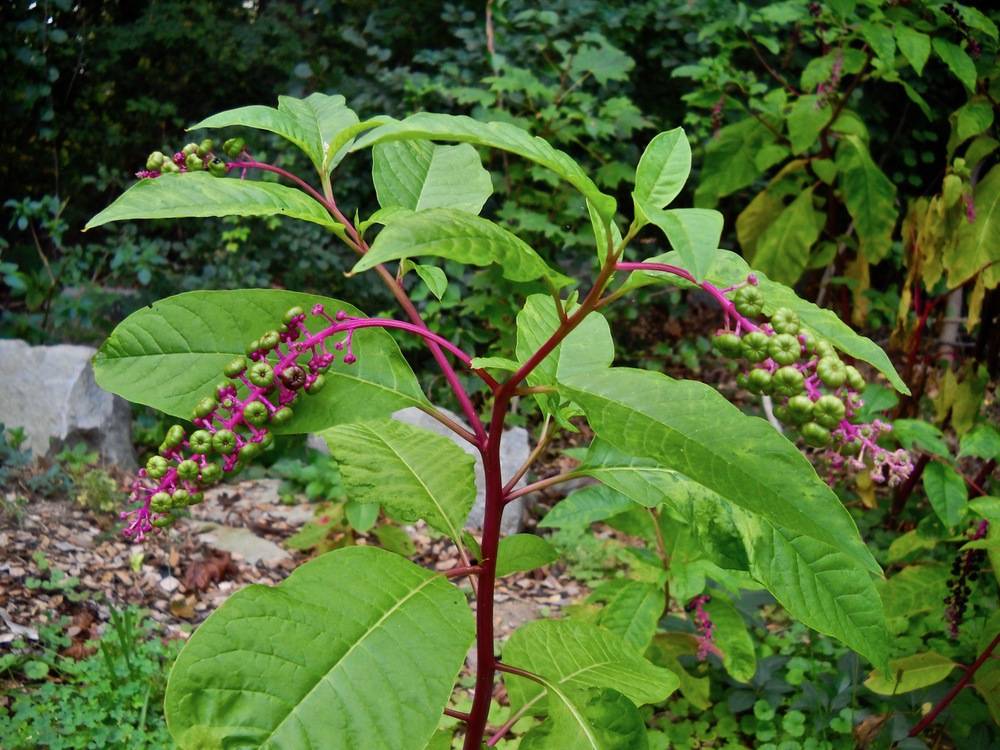American pokeweed
The American pokeweed is a native herbaceous perennial found growing in open or edge habitats. It is a notable plant for its size, appearance, and toxicity. At Salter Grove, depending on age and soil conditions, fruiting individuals range from 1 to 7 feet in height. Elsewhere in its range, pokeweeds as tall as 21 feet have been recorded. This is certainly an impressive feat for a non-woody plant.
By mid-summer, plants can be seen flowering above the high tide line along the Marsh Trail, along the edge of the upland woods south of the parking lot, and along the clearing southeast of the playground.
Its panicles of deep purple fruits and bright red stems are striking against the large green leaves that would look at home in a tropical forest. It has been used by landscapists as an ornamental. However, once established, the plant is difficult to eliminate. The root quickly grows into a substantial tuber that grows downwards and sideways. If not totally removed, stems will continue to sprout from root fragments left in the ground.
The young leaves can be eaten if properly prepared, but all parts of the plant, especially the roots, become increasingly poisonous with maturity to humans and other mammals. When consumed, effects include violent vomiting, convulsions, spasms and respiratory paralysis. However, it was applied externally to alleviate symptoms due to venereal diseases. A preparation of the root in lard was used to treat various skin conditions and glandular swellings. Native Americans used the plant to cleanse the gastrointestinal system since it induces both diarrhea and vomiting.
Birds do not appear to be affected by the chemical that causes violent purging or even death in large mammals. Species like the Brown Thrasher, Gray Catbird, Mourning Dove, Northern Cardinal and the Northern Mockingbird flock to feed on the ripe berries in the fall.
For more information:
https://en.wikipedia.org/wiki/Phytolacca_americana
https://www.fs.fed.us/wildflowers/plant-of-the-week/phytolacca_americana.shtml
http://www.florafinder.com/Species/Phytolacca_americana.php
Coon, N. (1979). Using Plants for Healing. Rodale Press. p. 156.
Millspaugh, C.F. (1974). American Medicinal Plants. Dover Publications, Inc. pp. 557-561. (Original work published in 1892)
Richardson, J. (1981). Wild edible plants of New England: A field guide : including poisonous plants often encountered. DeLorme Pub. Co. pp. 123-124.

